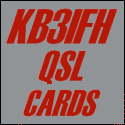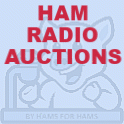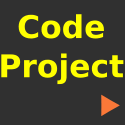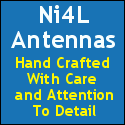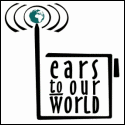Archive for the ‘hf’ Category
 Common Ham Shack Radio Configurations
Common Ham Shack Radio Configurations
Amateur radio transceivers have improved dramatically over the decades and they pack a lot of capability into relatively compact radios. In this post, we will take a look at the typical configurations and how they may impact setting up a flexible amateur radio station today. This discussion is focused on currently available new gear, with 50 to 100 watts of RF power.

The most common HF radio configuration used to be a 5-band model that offered CW, AM, and SSB on 80 meters, 40 meters, 20 meters, 15 meters, and 10 meters. In the early 1980s, the WARC bands were added (named for the World Administrative Radio Conference of 1979) that authorized these new bands. The WARC bands are 30 meters, 17 meters, and 12 meters. These attractive new bands were soon added to the standard HF rig. Most HF radios include 160 meters (actually a Medium Frequency or MF band) on the low end and a general coverage receiver for 150 kHz to 30 MHz. So these days, the typical HF transceiver handles 9 bands and many different modes. (Actually, most of these rigs now include 6 meters, more on that later.)
Dominant Design
In the world of product development, the concept of a dominant design often emerges. This generally accepted approach dominates a particular market and is considered the standard way of doing things in a particular product category.
From Wikipedia:
Dominant design is a technology management concept introduced by James M. Utterback and William J. Abernathy in 1975, identifying key technological features that become a de facto standard. A dominant design is the one that wins the allegiance of the marketplace, the one to which competitors and innovators must adhere if they hope to command significant market following.
We will see that most ham radio gear conforms to the concept of a dominant design. That is, certain product configurations become standard, especially in terms of frequency bands and modes. Manufacturers still innovate by adding new features in an attempt to differentiate and obtain competitive advantage but the basic capabilities are standard. The dominant design for HF transceivers is the 100-watt radio that covers 160m through 6m.
VHF/UHF Radios
For VHF/UHF, the situation is a bit more scattered. 2-meter FM is the most popular band and back in the olden days, it was common to just have a single-band 2m FM rig in the shack. To cover 70 cm FM, a radio ham needed a second radio but later dual-band radios showed up that covered 2m and 70 cm. Today, the dominant design for VHF/UHF is the dual-band FM transceiver (typically 50 watts of output power) and there are so many of these available I won’t attempt to list them.

VHF FM is the utility mode for amateur radio and many hams are just fine using FM (or one of the digital voice modes) on VHF/UHF. Those who want to stretch the limits of VHF/UHF operating usually go for all-mode rigs that offer CW, SSB, FM and various WSJT digital modes. Again, back in the olden days, a VHF+ enthusiast would acquire single-band all-mode radios for the bands of interest. A ham really into VHF/UHF might have single-band radios for 6m, 2m, 1.25m, and 70 cm stacked up in the ham shack. The 1.25-meter band has always been a bit neglected in terms of equipment availability because that band is not available worldwide. Transverters are another option to get all-mode capability on these bands using an HF transceiver to transvert to a single VHF or UHF band.
HF Plus 6 Meters
One important addition to the standard HF rig is that the 6m band is often included. Now this may not sound quite right because we all know that 6 meters is a VHF band, so what is it doing in an HF radio? It actually makes a lot of sense because a lot of 6-meter operating is similar to HF. (6 meters is the VHF band that often emulates HF.) There is FM activity on 6 meters but most of the action is on SSB, CW, and, yes, FT8. In fact, FT8 is seeing a lot of action on the band, so if you want to participate on 6m, you should consider that mode. Anyway, this all means you probably need an all-mode radio for 6 meters, and having it as a bonus band on an HF radio without a huge increase in cost is a good approach. (These radios usually support FM for the 10m and 6m bands.)

All-Band All-Mode Rigs
Another common transceiver configuration is the All-Band All-Mode radio available from several manufacturers. A great example of this type of radio is the Yaesu FT-991A, which includes 160m through 10m plus 6m, 2m, and 70cm. Once again, 1.25m is passed over. This radio configuration has a lot of appeal because it covers pretty much everything with all-mode capability. (It also has a built-in sound card and USB connection which is handy for the WSJT digital modes.)

The FT-991A is a good choice for the ham shack or operating portable but it is a bit large for a mobile installation. Icom offers the IC-7100 in a mobile form factor, with a novel sloping detachable front panel. Yaesu used to offer mobile products in this space such as the very popular FT-857D transceiver. However, the FT-857D is no longer made and its apparent replacement is the FT-981 which has only the HF + 6m bands.

The main disadvantage of this type of radio is that it can only do one frequency at a time. Often, I want to be able to work HF while still monitoring the local 2m FM repeater and simplex channels. Or maybe I’d like to keep listening for 6 meter activity while working 2m SSB, especially during a contest. However, this type of radio is my first choice for portable operating for Parks On The Air because it covers all the bands and modes. This article is focused on 100-watt radios but note that there are all-mode all-band QRP radios such as the IC-705.
All Mode VHF/UHF Radios
One interesting and disappointing trend that has emerged is the distinct lack of VHF/UHF all-mode transceivers. There is only one such radio on the market today, the Icom IC-9700 which does all modes on 2m, 70cm, and 23 cm (1.2 GHz). It seems that Icom decided that if they are going to offer a VHF/UHF radio, they would go full-featured and include 23 cm. Note that if you pair this radio with an HF plus 6m radio, you can cover all the popular bands with all modes using two radios. This radio is not inexpensive, currently selling new for about $1800.

I suppose we can declare this the dominant design for VHF/UHF but it is a lone product in this space. I have written previously about an all-mode dual-band portable radio for 2m/70cm that I desire. I own an IC-9700 and like it a lot but I would give up the 23 cm band to have a radio that is more portable and less expensive. I suspect that Icom is happily making good profit margins on the IC-9700 given that they have essentially no competition in this space. Yaesu has the technology to do something here but has been content to let the FT-991A cover the all-mode 2m/70cm space for them.
Common Ham Shack Setups
Now let’s take a look at some common ham shack configurations that consider these different radio configurations. When I say “ham shack” that may include your mobile or portable station, too.
Setup 1: FM VHF/UHF Only A Technician might decide they want to focus on 2m and 70cm, with FM being just fine for working simplex and repeaters on those bands. A basic dual-band FM transceiver will handle this nicely, see A VHF FM Station at Home. For some hams, their dual-band handheld radio serves this purpose.
Setup 2: All-Band All-Mode Transceiver As mentioned earlier, All-Band All-Mode radios cover the most popular ham bands and modes with one rig. They are a good way to get one radio that does everything. The disadvantage is not being able to monitor VHF/UHF at the same time as working HF.
Setup 3: HF/6m radio plus 2m/70cm FM radio This is a very common configuration for a ham shack because it separates the HF bands (and 6m) from the 2m/70cm FM operating. The FM rig can be left monitoring your favorite repeater or simplex frequency while you chase DX on 15 meters. If your 2m/70cm needs are basic, the FM radio might even be a handheld transceiver.
Setup 4: HF/6m radio plus all-mode VHF/UHF radio This is the setup for the ham that wants to cover all the bands and be able to do all modes on VHF/UHF. The band/mode coverage is similar to Setup 2 but we have two radios available which provides the monitoring flexibility associated with Setup 3. This configuration allows for having a really good HF/6m radio and a really good VHF/UHF radio.
Conclusions
The ham radio transceivers being offered tend to follow certain patterns consistent with the dominant design theory. If you buy a modern HF transceiver, you will get all of the HF bands plus the 6m bonus band. These radios vary in features and performance but they all have good band/mode coverage. The VHF/UHF situation is perhaps not quite as simple. The standard 2m/70cm FM rig is a popular option but is limited to FM only. The VHF/UHF weak-signal enthusiast does not have many choices beyond the IC-9700, which may represent an opportunity for another manufacturer to jump in with a more cost-effective 2m/70cm all-mode radio. The 1.25m band continues to be neglected and may be a good additional band to add to 2m/70cm radios.
That’s my analysis. What do you think?
73 Bob K0NR
The post Common Ham Shack Radio Configurations appeared first on The KØNR Radio Site.
 Fraser Does Pikes Peak
Fraser Does Pikes Peak
Pikes Peak is a great summit for a SOTA activation. You can hike up, drive up, or take the cog railway to get to the top. Pikes towers over eastern Colorado and has an excellent radio horizon in all directions. It is easy to work a bunch of stations on 2m FM. With a bit of effort, you can work Kansas, Nebraska, Wyoming, and New Mexico on VHF.
Fraser/MM0EFI was visiting from Scotland, operating here in the US as W0/M0EFI. Here’s his HF operating experience, with cameo appearances by Carey/KX0R, Christian/F4WBN, Elliot/K6EL, and Steve/WG0AT.
Now for the VHF fun on 2m FM. I happened to be on South Monarch Ridge (W0C/SP-058) that day and we completed a Summit-to-Summit contact on 146.52 MHz, at a distance of about 80 miles—easy contact using just HT’s on both ends.
Fraser, thanks for the fun videos from America’s Mountain.
73 Bob K0NR
The post Fraser Does Pikes Peak appeared first on The KØNR Radio Site.
 An Easy HF Antenna
An Easy HF Antenna
When radio amateurs get ready to put an HF station on the air, they often have questions about what antenna to use. The good news is that there are many options to choose from. The bad news is that there are too many options to choose from. It can be overwhelming. This post describes an antenna I just installed that is easy to put up and works well.

Having 30-foot tall pine trees on our property, my usual approach for HF antennas is “wires in the trees.” I have several ropes strung up over these tall trees so that I can raise and lower wire antennas as needed. These ropes were installed using a slingshot to launch a fishing line over the top of the tree, and then pull up a lightweight rope.

End Fed Long Wire
The antenna is the EFLW-1K from MyAntennas.com, which is an End Fed Long Wire Antenna. (This should not be confused with an End Fed Half Wave antenna.) This antenna is intentionally cut to not be a resonant length on any of the bands. The 9:1 UNUN transforms the high impedance at the end of the wire down to something closer to 50 ohms. The match is not perfect so an antenna tuner is required to cover all of the bands. MyAntennas offers this antenna with different lengths of wire, with longer wires required to support the lower HF bands. I purchased the 53-foot version but decided to shorten the wire. My interest is working 20 meters and higher and I wanted the antenna to be mostly vertical, so I shortened the wire to about 30 feet. The MyAntennas products are good but any 9:1 UNUN on the end of a wire will work.
An endfed antenna like this needs some kind of counterpoise to balance out the antenna operation. Many people have written about this and there are many different approaches. The MyAntenna UNUN has a connector intended to support adding a short length of counterpoise wire. A decent length of coaxial cable lying on the ground can function as this counterpoise and that’s what I decided to use. I have a 50-foot length of LMR 400 connected to this antenna, lying on the ground.

I also added an inline isolation transformer to minimize the common mode currents getting back to the transceiver. I don’t know that this is required but I had one available so I used it. The antenna has 50 feet of LMR coax to the inline transformer and then another 25 feet of RG-8X to the transceiver. The internal antenna tuner in my Icom IC-7610 handles this antenna quite well, tuning up on 20m, 17m, 15m, 12m and 10m. This means I can instantly switch between the bands and be ready to go.
I’ve been running SSB, FT8 and FT4 on this antenna, working many stations in all regions: Europe, Asia, Oceania, Africa, North and South America. Conditions are great and I keep telling newer folks: now is the time to be on HF! This basic antenna is a great way to get on the air and work some DX.
73 Bob K0NR
The post An Easy HF Antenna appeared first on The KØNR Radio Site.
 24 December to 31 December: 1st Ever Winter Olivia Digital Mode QSO Party
24 December to 31 December: 1st Ever Winter Olivia Digital Mode QSO Party
Special Event Week: Dec 24-Dec 31, 2023
The 1st annual Olivia Digital Mode on HF Winter QSO Party, celebrating 20 years of Olivia.
The Olivia Digital DXers Club (we’re on ClubLog!) is holding the first annual Winter Olivia Digital Mode on HF QSO Party, starting at 00:00 UTC, 24 December 2023, and ending at 23:59 UTC, 31 December, 2023.
Minimum logging requirements: Callsign worked, Band (or Frequency), Mode (I.e., Olivia 8/250, or other variations), Time QSO Started. You can log more than that, but for the sake of the certificate, please send at least the minimum information per QSO, to NW7US (email is on QRZ profile). Logs can be any common method, from an .ADI file, to a screen shot.
Full details are on our website:
https://OliviaDigitalMode.org
Olivia, a Multi-Frequency Shift Keying (MFSK) radioteletype digital mode, is an amateur radioteletype protocol designed to work in difficult (low signal-to-noise ratio plus multipath) propagation conditions on shortwave radio (i.e., high-frequency, or HF) bands. The typical Olivia signal is decoded when the amplitude of the noise is over ten times that of the digital signal!
Here is an introduction to the Olivia digital mode:
73 de NW7US
 Better Than FT8? Olivia Digital Chat Mode – Raleigh Amateur Radio Society Video
Better Than FT8? Olivia Digital Chat Mode – Raleigh Amateur Radio Society Video
Olivia is the digital communications mode on shortwave (high frequency sub band, or, HF) for amateur radio operators who want more than the “Check Propagation” FT8 mode. This video is an introduction that was presented to the Raleigh Amateur Radio Society ( https://www.rars.org/ ) on December 12, 2023, presented by Tomas Hood, NW7US
Olivia information can be found, here:
https://OliviaDigitalMode.org
Olivia, a Multi-Frequency Shift Keying (MFSK) radioteletype digital mode, is an amateur radioteletype protocol designed to work in difficult (low signal-to-noise ratio plus multipath) propagation conditions on shortwave radio (i.e., high-frequency, or HF) bands. The typical Olivia signal is decoded when the amplitude of the noise is over ten times that of the digital signal! It is commonly used by amateur radio operators to reliably transmit ASCII characters over noisy channels (slices of high-frequency spectrum — i.e., frequencies from 3 MHz to 30 MHz; HF) exhibiting significant fading and propagation phasing.
The Olivia digital modes are commonly referred to by the number of tones and the bandwidth used (in Hz). Therefore, it is common to express the Olivia digital mode as Olivia X/Y (or, alternatively, Olivia Y/X ), where X refers to the number of different audio tones transmitted, and Y refers to the bandwidth in Hertz over which these signals are spread. Examples of common Olivia modes are, 8/250 (meaning, 8 tones/250-Hertz bandwidth), 16/500, and, 32/1000.
The protocol was developed at the end of 2003 by Pawel Jalocha. The first on-the-air tests were performed by two radio amateurs, Fred OH/DK4ZC and Les VK2DSG, on the Europe-Australia propagation path in the 20-meter shortwave radio amateur band. The tests proved that the Olivia protocol (or, digital mode) works well and can allow regular intercontinental radio contacts with as little as one-watt RF power (when propagation is highly-favorable). Since 2005, Olivia has become a standard for digital data transfer under white noise, fading and multipath, flutter (polar path) and auroral conditions.
Olivia can perform nearly as good as the very popular WSJT mode, FT8, and better than FT4.
See you on the waterfall!
73 de NW7US
 The Art of DX Pileup Busting
The Art of DX Pileup Busting
SOME INFORMAL THOUGHTS ON WORKING CW DX
Recently, I came across some questions another amateur radio operator posed to a group of CW enthusiasts. Since I have an interest in Morse code, I thought I would explore these questions:
— begin quote —
1. When chasing some particular CW DX station needed for my DXCC punch-list, what are some things(s) that one can do to improve one’s chances of snagging that DX contact amidst a congested pileup? Is it truly the luck of the draw or roll of the dice? Or are there some time tested methods, less than obvious, that the experienced CW DX chasers have used that seem to improve one’s chances of snagging the DX contact? Yes, I’m aware that there are many variables to consider. I’m just looking for some general suggestions to improve my odds of success based on the experience of others.
2. If, let’s say, a DX station appends “UP 1” or “QSX 2” to his CQ call or just “UP” appears in a DX cluster spot listing, what is considered an acceptable amount of “UP”? I’m amazed sometimes at the amount of “UP” that I hear. LOL. Does a hefty amount of “UP” actually improve one’s chances? What does the DX op expect?
3. After a DX station sends their callsign how long should one wait to reply with one’s callsign? I hear stations respond immediately. But sometimes I hear others wait just a “bit”, and then respond to DX. And sometimes when the DX station is responding to a chosen station, other callers are STILL calling the DX op. What do most DX operators expect with regard to the response of a reply? Immediate? One-Mississippi …?
4. I hear stations reply to DX with their callsign once. Others sometimes twice. If I send my callsign twice I run the risk that the DX station has already begun his reply back to me with my sig-report while I’m still in the midst of sending my 2nd callsign reply. So … I should send my call just once?
— end quote–
Great questions! And, the answers translate over to working DX pileups on voice, too.
Here are some of my off-the-cuff remarks, based on my limited experience DXing since 1990:
(I am an avid DXer, with 8BDXCC, etc.)
1. Listen, Listen, Listen: The DX station typically does work split – the DX station on, say, 14.023 MHz, and the DX station is listening anywhere from 14.028 to 14.033 (up 5 to 10). You first, of course, need to listen to the DX station, but, also to hear the stations that are calling the DX station! The trick is to be able to hear some of the stations that are piling up on the DX, and to determine if the DX is working a station, then tunes up a little, or down a little, from the frequency on which the last caller was chosen.
Once you know this, you want to position your signal so that the DX operator tunes to or very near where you are transmitting your signal. If the DX station does not call you but continues in the same tuning direction, you reposition your transmit frequency (always in the pileup window) and try again. If you do not know where the DX station is listening next, and especially if you cannot HEAR the DX station, you are calling blind and are in for a long effort.
If you have a way to see the waterfall at and around the DX frequency, you can often see the general spread of “UP” where the callers congregate. When listening (and, let me tell you, listening is key) to the DX station, watch the waterfall for the responding caller (the station in the pile-up calling the DX), as sometimes it is very obvious who is answering the DX. Watch this exchange for a number of new callers – and get a sense of HOW the DX operator is moving through the pile-up. Anticipate where the DX might listen next. Choose that “next frequency in the pattern of movement” and use that as your calling frequency.
2. Timing your call: this takes a bit of effort. I typically listen to my chosen transmit frequency, trying to call never at the exact same time as others, on or near my calling frequency.
3. I always send my callsign TWICE… something like this:
DX: DX1ABC UP
ME: NW7US NW7US
DX: NW7US 5NN
ME: R R NW7US 5NN TU
DX: NW7US TU, DX1ABC UP
There are some fine CW-oriented DXing books, PDFs, and websites that talk about this. For instance:
http://sota-dl.bplaced.net/articles/cw_chasing_tips_for_newcomers.pdf
https://www.cadxa.org/getting-started-in-dxing.html
I hope this personal observation of mine about working a Morse code pileup is helpful in some way.
73 de NW7US
https://NW7US.us
..
 Adios Symbol Rate Limit
Adios Symbol Rate Limit
 The FCC will be voting on and will likely approve a Report and Order that eliminates the symbol rate restriction on HF data transmissions, replacing it with a bandwidth limit of 2.8 kHz. See FCC To Vote on Removing Symbol Rate Restrictions. The symbol rate limit of 300-baud is an obsolete way of limiting the signal bandwidth, created back when the data transmissions were predominately Frequency Shift Keying (FSK). It was a simple, practical way to regulate the bandwidth at that time but technology has moved on. The use of digital signal processing and efficient wireless encoding techniques require a better approach to bandwidth regulation.
The FCC will be voting on and will likely approve a Report and Order that eliminates the symbol rate restriction on HF data transmissions, replacing it with a bandwidth limit of 2.8 kHz. See FCC To Vote on Removing Symbol Rate Restrictions. The symbol rate limit of 300-baud is an obsolete way of limiting the signal bandwidth, created back when the data transmissions were predominately Frequency Shift Keying (FSK). It was a simple, practical way to regulate the bandwidth at that time but technology has moved on. The use of digital signal processing and efficient wireless encoding techniques require a better approach to bandwidth regulation.
A practical impact of this change is to allow higher speed protocols such as PACTOR-4 having a bandwidth of 2.4 kHz. I suspect we will see other protocols emerge that squeeze the best data rate out of the 2.8 kHz bandwidth.
Living in a Narrowband World
The FCC proposal implements a 2.8 kHz bandwidth limit on data emissions on the HF bands. Some folks have suggested a narrower bandwidth while others argue that wider bandwidth signals should be allowed. And some even think we should have no bandwidth limit at all.
The problem is that the amateur HF bands are not very wide. For example, the popular 20m band is 14.0 to 14.350 MHz, providing only 350 kHz of spectrum. Common practice on this and the other HF bands is to use modulation types that have bandwidths of 3 kHz or less. (Yeah, AM signals are twice that wide, at 6 KHz, a topic for another day.) Of course, CW and some of the data modes are much narrower than 3 kHz. But the general approach to regulating HF is to allow many narrowband signals on the band. Limiting HF data transmissions to 2.8 kHz bandwidth is consistent with existing practice while still allowing for innovation and experimentation.
VHF/UHF Bandwidth Limits
The FCC also plans to issue a Further Notice of Proposed Rulemaking (FNPR) that:
- Proposes to remove the baud rate limitation in the 2200 meter and 630 meter bands, which the Commission allocated for amateur radio use after it released the Notice of Proposed Rulemaking in 2016.
- Proposes to remove the baud rate limitation in the VHF and UHF bands.
- Seeks comment on the appropriate bandwidth limitation for the 2200 meter band, the 630 meter band, and the VHF/UHF bands.
I won’t comment on the 2200 meter and 630 meter bands. The FCC proposes to remove the symbol rate limit on the VHF and UHF bands and asks what bandwidth limit is appropriate. The current bandwidth limits are 20 kHz for the 6m and 2m bands, 100 kHz for the 1.25m and 70 cm bands, and the FCC seems fine leaving these the same. Authorized emission types are listed in FCC Part 97.305.
With 4 MHz of spectrum, the 2m band is much wider than any of the HF bands. It might be tempting to conclude that there is plenty of room for wideband signals on this band. Many hams think 2 meters is just used for FM simplex and repeaters but a closer look reveals that it supports many diverse modes: weak-signal SSB/CW, meteor scatter, EME, FM simplex, FM repeaters, digital voice modes (D-STAR, DMR, Fusion), satellites, and more. The 20-kHz limit seems appropriate, as it roughly matches the bandwidth of the most common (FM) voice signals on that band. It is not an appropriate band for trying out wider bandwidth signals.
The 6m band should probably keep the same 20-kHz limit. (I don’t think there is a compelling reason to change it.) The 1.25m band already allows 100-kHz bandwidth data signals, which some radio amateurs have used for higher-speed data links (still not what I would call wideband).
The 70 cm band is much bigger (420 MHz to 450 MHz) and could accommodate some wider bandwidth signals. Perhaps the existing 100-kHz limit should be increased? Keep in mind that fast-scan ATV is allowed on this band with a bandwidth of 6 MHz. Maybe we can make some room for a few larger bandwidth data channels, to encourage innovation and experimentation.
The bands above 70 cm have no bandwidth limit other than the signal must stay within the designated ham band. It has been this way for a long time, without causing any issues (that I know of).
Conclusion
The FCC’s proposal makes a lot of sense and it is long overdue. Frankly, it is a bit of an embarrassment that it has taken so long.
Better late than never.
73 Bob K0NR
The post Adios Symbol Rate Limit appeared first on The KØNR Radio Site.



